Memphis architecture is making a dynamic comeback
Our architectural love letter from Memphis explores the American South city's dynamic built environment scene

Memphis is a city that shows its scars. This once vibrant Tennessee hub fell on hard times, following the assassination of Dr Martin Luther King here in 1968 and the subsequent unrest. A mass exodus of businesses hollowed out the heart of its downtown, where for decades, haunting sweeps of the city became a ghost town. But time is gradually healing the wounds and it's the revival of Memphis’ neglected buildings that’s proving particularly therapeutic. Derelict shells are being reimagined as cultural and community cores. A historically significant church is rising from the ashes as a pivotal civil rights site. And this Memphis architecture renaissance is attracting world famous names to the table, including Herzog & de Meuron and Studio Gang. This iconic music city is finally singing a new song, or at least adding some new riffs to its storied landscape.
New and upcoming Memphis architecture
Memphis Brooks Art Museum, by Herzog & de Meuron and Archimania

Offering a serious boost to Memphis’ regeneration efforts, Herzog & de Meuron and Memphis-based architects Archimania have unveiled their vision for the city’s new art complex, located in the downtown area overlooking the Mississippi River. Due to open in 2026, the structure will include a 175-seat glass box theatre overlooking a wooden-clad courtyard, exhibition spaces on the upper floor and a roof deck offering panoramic views of Memphis.
Tom Lee Park, Studio Gang and Scape
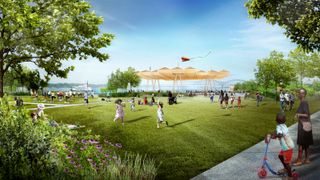
Forming part of a larger regeneration of six miles of its waterfront, Tom Lee Park will transform a largely barren strip of land into a network of community spaces for year-round use, with an adventure park, kinetic boardwalk and river-edge pavilions, due to open in 2023. The park also commemorates Tom Lee, an African American man who rescued 32 people from drowning, and aims to create a historic walking loop with the nearby National Civil Rights Museum.
Historic Clayborn Temple, by Self + Tucker
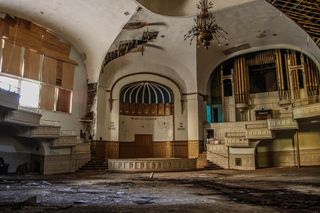
As a rallying point for the sanitation workers’ strike of 1968, this Romanesque Revival church played a crucial role in the civil rights movement but was later left vacant for a decade. Its rehabilitation is spearheaded by local architects Self + Tucker, who are major players in Memphis’ revival, alongside cultural strategist Anasa Troutman. She says: ‘Memphis could be a pilot for the future of America. There’s an opportunity here to get race and class right, so we all have communities that feel joyful and abundant.’ Work is currently underway to transform Historic Clayborn Temple into a community space and a key site on the civil rights trail, opening 2024.
Crosstown Concourse, Looney Ricks Kiss in association with Dialog
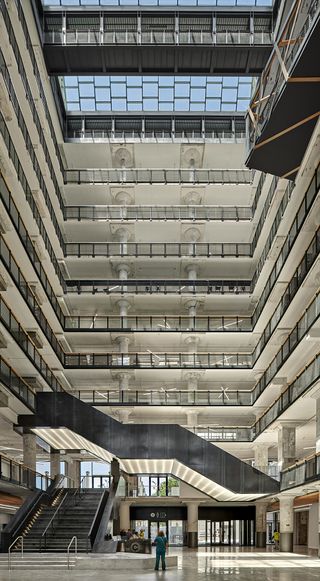
This former Sears distribution centre sat abandoned for 20 years, narrowly missing a visit from the wrecking ball. Its saviour was a tenacious local historian named Todd Richardson, who championed its metamorphosis into Crosstown Concourse: an ambitious 1.3-million-sq-ft vertical urban village deeply rooted in the arts, education and healthcare. ‘Everyone thought it was impossible,’ says Tony Pellicciotti, architect and principal at Looney Ricks Kiss (LRK), who recalls site visits involving wading through knee-high stagnant water. ‘But Memphis is an entrepreneurial, pull-yourself-up-by-your-bootstraps kind of place, so happen it did.’
Carbon Neutral Corridors, by Archimania

Ticking both the zero-carbon and zero-energy boxes, this high-performance build took two unloved, corporate offices in the residential Cooper Young district and upcycled them into a mixed-use micro village. Using a combination of solar panels and a geothermal system in the ground, the project now generates seven per cent more energy than it consumes. ‘This is a model for how to take an existing site that’s very ordinary, and make it extraordinary,’ says Archimania’s senior associate Jacob Davis, who hopes that this radical recycling of existing buildings will be rolled out throughout the US.
Orange Mound Tower

This abandoned United Equipment tower rises above the Orange Mound skyline: the first neighbourhood in the US built solely by and for African Americans. Taking on the herculean task of revitalizing the derelict concrete tower into a beacon of hope, artist Victoria Jones and music producer James Dukes purchased the site to transform it into a mixed-use development, including a creative incubator featuring galleries and performance spaces. With the development expected to contain 100,000 sq ft of space, Looney Ricks Kiss and Aaron Patrick Architects have completed the master plan. Jones and Dukes are currently seeking a lead architect to bring their vision to life, with construction planned for 2023.
Wallpaper* Newsletter
Receive our daily digest of inspiration, escapism and design stories from around the world direct to your inbox
Central Station Hotel, by Bounds & Gillespie Architects in association with Looney Ricks Kiss

Memphis’ South Main Arts District is an area on the up, bolstered by the 2019 opening of Central Station Hotel in a renovated train station. Completion was no small feat, with the project needing to preserve the character of the 105-year-old building and incorporate a still functioning Amtrak ticket office, alongside operating as a hotel, restaurant and bustling lobby bar. The thread that weaves throughout is Memphis’ legendary music scene, from the high-tech EgglestonWorks listening lounge to the original train platform, reborn as a stage for local bands.
INFORMATION
-
 The 2024 Ivor Novello nominations for songwriting have been revealed
The 2024 Ivor Novello nominations for songwriting have been revealed77 British and Irish songwriters and composers make up this year's nominees, announced tonight at London's Groucho Club
By Charlotte Gunn Published
-
 Why Bollinger’s La Grande Année 2015 champagne is worth celebrating
Why Bollinger’s La Grande Année 2015 champagne is worth celebratingChampagne Bollinger unveils La Grande Année 2015 and La Grande Année Rosé 2015, two outstanding cuvées from an exceptional year in wine-making
By Melina Keays Published
-
 Lexus installation explores time at Milan Design Week 2024
Lexus installation explores time at Milan Design Week 2024Lexus brought designer Hideki Yoshimoto’s ‘Beyond the Horizon’ to Milan’s Art Point, part of its ongoing series of collaborations with Fuorisalone
By Nargess Shahmanesh Banks Published
-
 Shigeru Ban’s mini Paper Log House welcomed at The Glass House
Shigeru Ban’s mini Paper Log House welcomed at The Glass House'Shigeru Ban: The Paper Log House' is shown at The Glass House in New Canaan, USA as the house museum of American architect Philip Johnson plays host to the Japanese architect’s model temporary home concept
By Adrian Madlener Published
-
 Ray Phoenix to rise in Arizona
Ray Phoenix to rise in ArizonaRay Phoenix housing project launches, designed by Johnston Marklee, who worked with Lamar Johnson Collaborative, for property experts Ray and Vela
By Ellie Stathaki Published
-
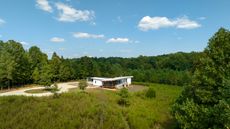 A low-energy farmhouse provides a rural escape in North Carolina
A low-energy farmhouse provides a rural escape in North CarolinaThis low-energy farmhouse is a net zero architectural re-set for a Californian client, an East Coast relocation for a more engaged and low-key lifestyle
By Jonathan Bell Published
-
 A Petra Island house rises from Frank Lloyd Wright's original drawings
A Petra Island house rises from Frank Lloyd Wright's original drawingsBased on Frank Lloyd Wright drawings, the cantilevering Petra Island Massaro House, located in New York’s Hudson Valley, is now open to visitors
By Craig Kellogg Published
-
 An Upper West Side apartment by General Assembly nods to its history
An Upper West Side apartment by General Assembly nods to its historyAn Upper West Side apartment in New York, born out of the reimagining of two neighbouring units, is refreshed by General Assembly for a young family
By Ellie Stathaki Published
-
 New York's Leica store echoes the brand's blend of heritage and innovation
New York's Leica store echoes the brand's blend of heritage and innovationLeica store throws open its doors in New York's Meatpacking District, courtesy of Brooklyn based Format Architecture Office
By Adrian Madlener Published
-
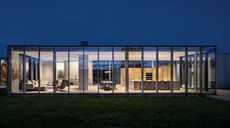 Hudson Valley Residence is a low-lying retreat that seamlessly blends into the horizon
Hudson Valley Residence is a low-lying retreat that seamlessly blends into the horizonDesigned by HGX Design, Hudson Valley Residence is a scenic home offering unobstructed views across the Catskill Mountains in Upstate New York
By Tianna Williams Published
-
 Boise Passive House’s bold gestures support an environmentally friendly design
Boise Passive House’s bold gestures support an environmentally friendly designBoise Passive House by Haas Architecture combines sleek, contemporary design and environmental efficiency
By Ellie Stathaki Published